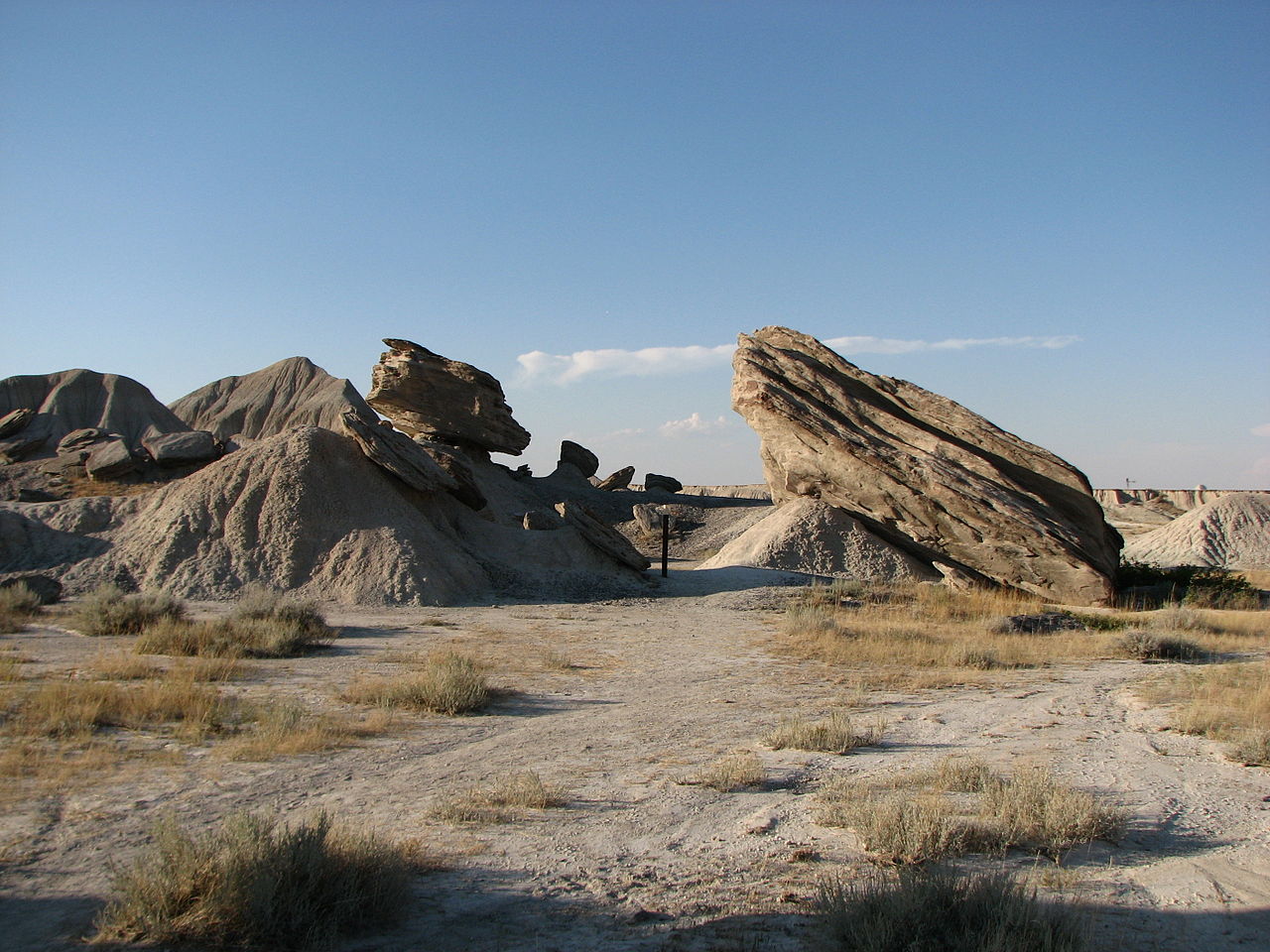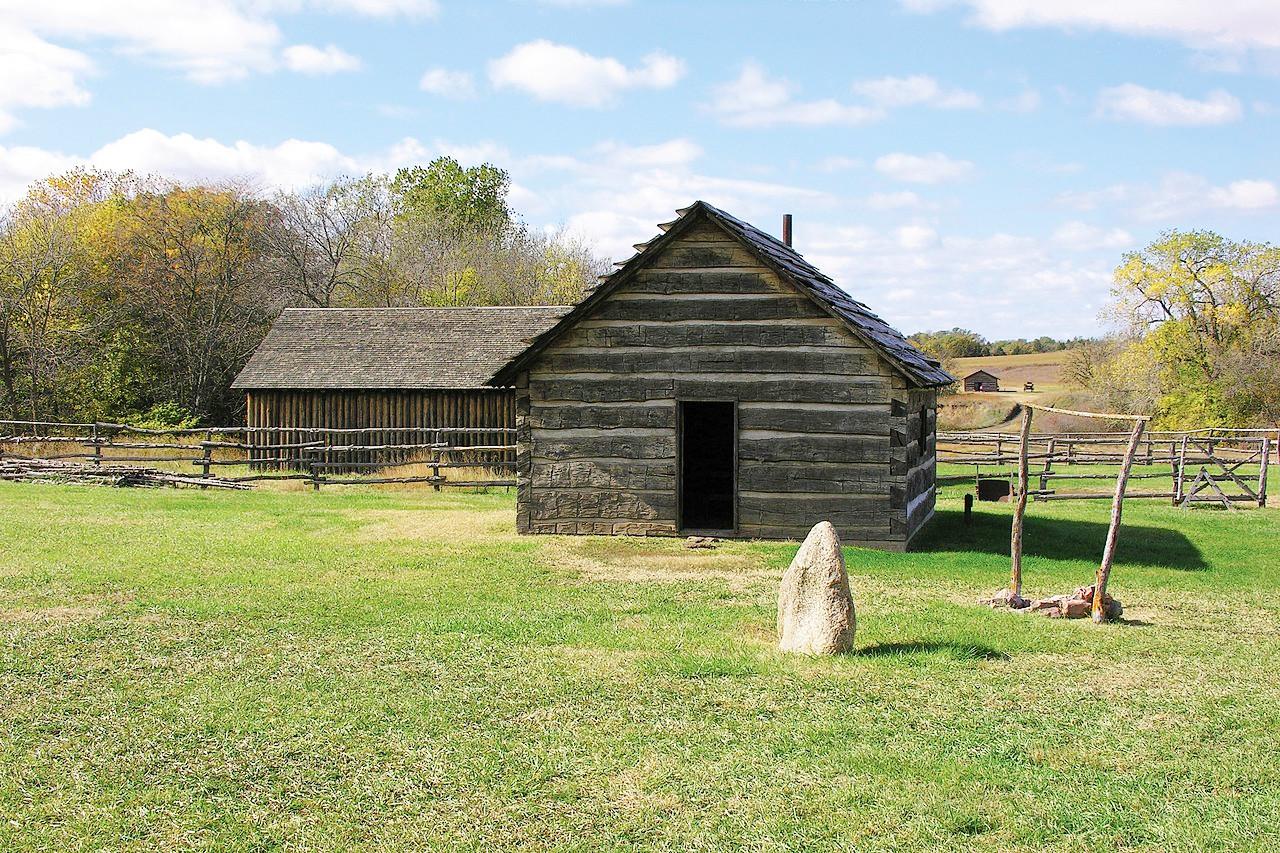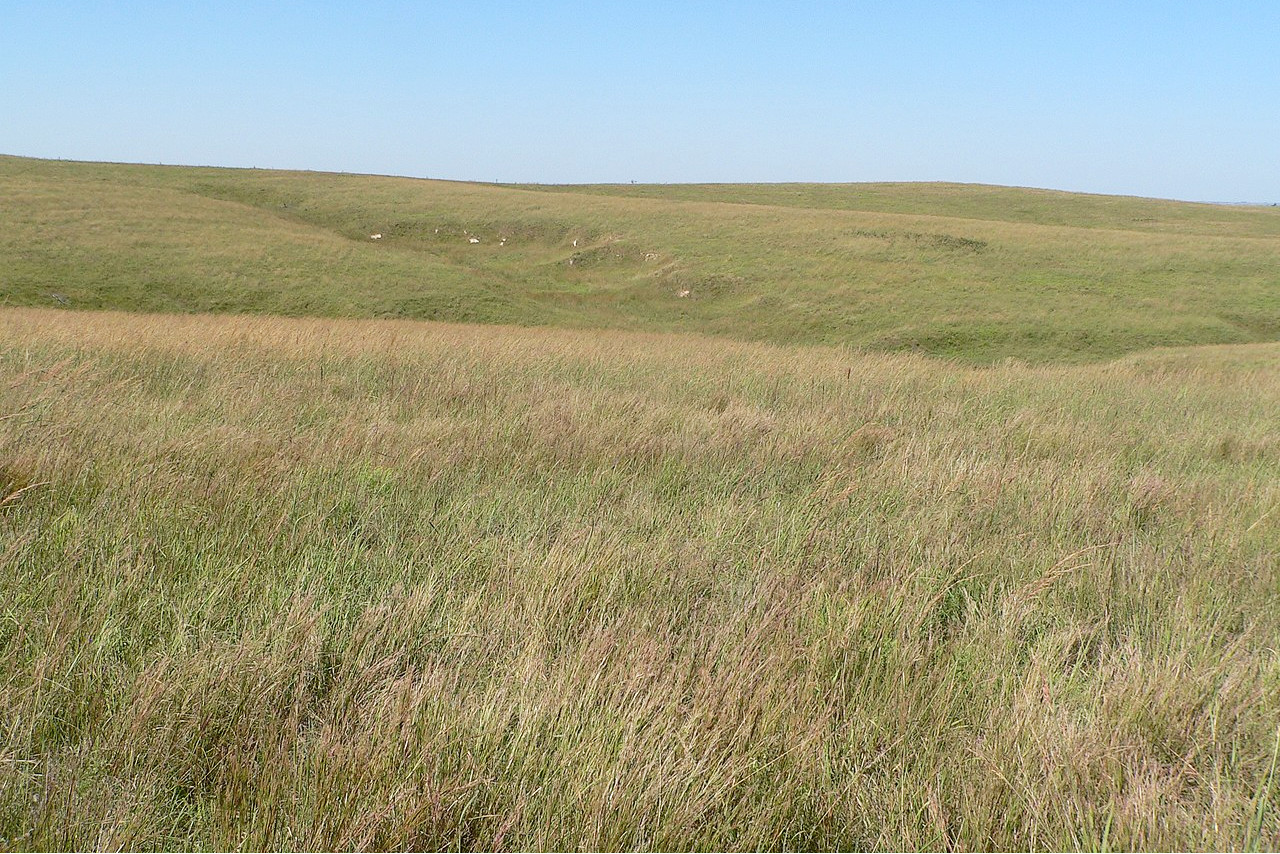The Geography of
Nebraska
Why visit Nebraska?
Part of the Great Plains, Nebraska has a great variety of scenery which makes it stand out from similar states. From the Sand Hills of northern Nebraska, to the many rivers which flow to the Missouri, the State is filled with colorful prairies, rolling hills, towering bluffs, and even the ranch of Buffalo Bill. Nebraska is great for people who love nature.
Map
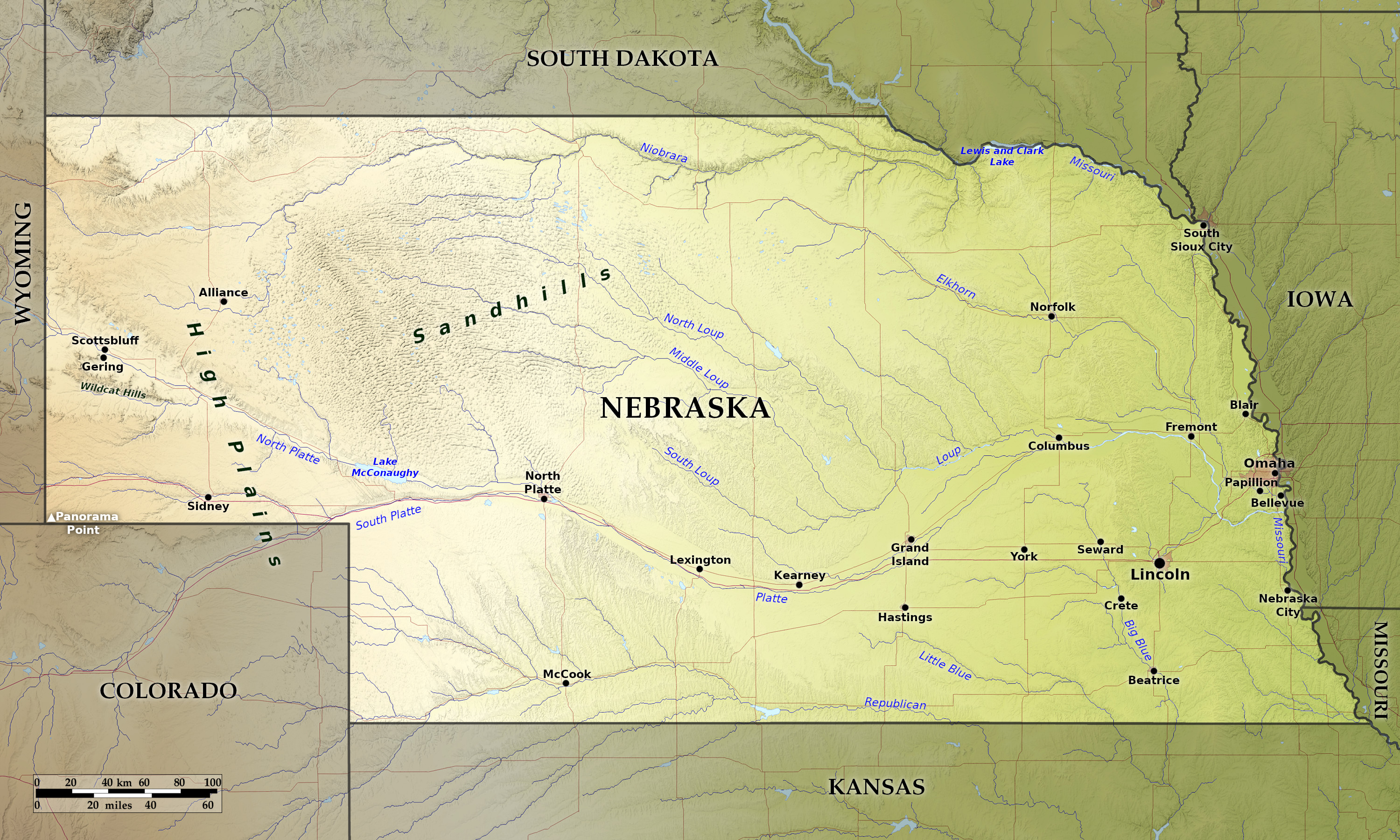 Relief map of Nebraska
Relief map of Nebraska
What is the landscape of Nebraska like?
High plains
Western Nebraska is characterized by high, barren tablelands, broken by canyons, dotted with buttes, and dominated by some bold and lofty ridges. Pine Ridge, a picturesque escarpment of the Great Plains, cuts across the northwest corner of Nebraska from Wyoming into South Dakota. A ridge of low hills and bluffs, often steep, marked by buttes and deeply cut in places by canyons, it is the most striking surface feature of the state. In the extreme northwest the White river and Hat Creek have carved canyons, creating fantastic cliffs and buttes, bare of vegetation, gashed with drainage channels, and baked by the sun.
The High Plains are imposing, and in the wooded foothills there is an abundance of attractive scenery, particularly in Sioux county, and in Cherry county around Valentine and on the canyon of the Snake river. The buttes—bare, pyramidal or conical, flat-topped hills, and often fantastic, towering pinnacles—are rather widely distributed through this region. Panorama Point, at 5,424 feet (1,653 m), is Nebraska's highest point; though despite its name and elevation, it is a relatively low rise near the Colorado and Wyoming borders.
Sandhills
In central Nebraska is the Sandhill region lying mainly north of the Platte river; though there are some along the Republican river. In places the hills rise in tiers, one above another, like miniature mountains, and are 200 to 300 feet (60–90 m) high; but in general they are very low (25–50 feet / 8–15 m high) and are scattered over a plain. They formed wholly as the result of wind action, but for the most part they have long ceased to be shifting dunes, and have become well grassed over. The Sandhills is dotted with small natural lakes; in the rest of the state, the main lakes are artificial.
Prairie
All about and penetrating into the foothill and sandhill regions are the prairies, which cover three-quarters of the state. The prairies are sometimes flat over wide areas, but is generally a region of gently rolling hills. River valleys and bottom lands criss-cross the prairies. The Missouri river is noteworthy for high bluffs cut by ravines, which border it almost continuously or at least one side. In the foothills there are typical canyons, as along the Platte forks, and in the northern edge of the sandhills.
What is the nature of Nebraska like?
Plants
The flora of Nebraska is very rich in species as compared with other states, but less so in the number of individuals. Small woods of broad-leaf trees (and red cedars) grow very generally along all the rivers of the State. Nebraska's deciduous forests are generally oak and hickory; conifer forests are dominated by western yellow (ponderosa) pine. Plums, grapes and the dwarf "sand-cherry" of the sandhills are prominent among many wild fruits. Nebraska has a great variety of native grasses. Common Nebraska wild flowers are wild rose, phlox, petunia, columbine, goldenrod, and sunflower.
The animal life of the state is quite varied—this is notably true of birds and of insects. Western, eastern, northern and southern bird species meet in Nebraska. The lakes of the sand-hills are the breeding-place of myriads of water birds.
What is the climate of Nebraska like?
The climate of Nebraska is typically continental, with cold winters, hot summers, rainfall in limited quantities, large seasonal and daily temperature ranges, and a large percentage of sunshine. In the west and northwest there are occasional winter blizzards, but in the southeast the winters are rather milder. Seventy percent of all rain falls in the growing season. Autumn is perhaps the finest season; the fields are green into the winter, the air is pure and fresh, though dry and warm, and the long season is delightfully mild and beautiful.
| Climate data for Lincoln, Nebraska | |||||||||||||
|---|---|---|---|---|---|---|---|---|---|---|---|---|---|
| Month | Jan | Feb | Mar | Apr | May | Jun | Jul | Aug | Sep | Oct | Nov | Dec | Year |
| Average high °F (°C) | 35.6 (2.0) | 40.6 (4.8) | 53.6 (12.0) | 64.8 (18.2) | 75.0 (23.9) | 85.2 (29.6) | 89.4 (31.9) | 87.2 (30.7) | 80.1 (26.7) | 66.6 (19.2) | 51.7 (10.9) | 39.4 (4.1) | 64.1 (17.8) |
| Daily mean °F (°C) | 25.0 (−3.9) | 29.5 (−1.4) | 41.2 (5.1) | 52.0 (11.1) | 63.1 (17.3) | 73.7 (23.2) | 78.1 (25.6) | 75.6 (24.2) | 67.2 (19.6) | 53.8 (12.1) | 39.8 (4.3) | 28.8 (−1.8) | 52.3 (11.3) |
| Average low °F (°C) | 14.4 (−9.8) | 18.4 (−7.6) | 28.7 (−1.8) | 39.2 (4.0) | 51.2 (10.7) | 62.1 (16.7) | 66.7 (19.3) | 64.1 (17.8) | 54.3 (12.4) | 41.0 (5.0) | 28.0 (−2.2) | 18.2 (−7.7) | 40.5 (4.7) |
| Average precipitation inches (mm) | 0.73 (19) | 0.89 (23) | 1.55 (39) | 2.69 (68) | 4.91 (125) | 4.48 (114) | 3.25 (83) | 3.32 (84) | 2.90 (74) | 2.14 (54) | 1.30 (33) | 1.18 (30) | 29.34 (745) |
| Average snowfall inches (cm) | 6.5 (17) | 7.1 (18) | 3.4 (8.6) | 1.2 (3.0) | 0.1 (0.25) | 0.0 (0.0) | 0.0 (0.0) | 0.0 (0.0) | 0.0 (0.0) | 0.9 (2.3) | 1.5 (3.8) | 5.3 (13) | 26.0 (66) |
| Source: NOAA | |||||||||||||
 Dowse Sod House located in Comstock, Custer County
Dowse Sod House located in Comstock, Custer County
The official websites
Nebraska
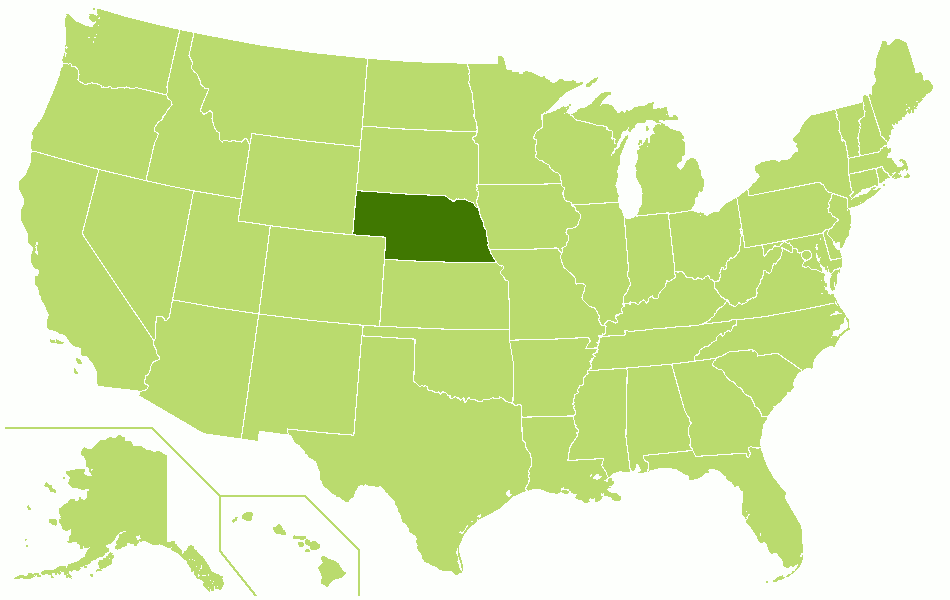
The Cornhusker State
| Location: | North central United States |
| Coordinates: | 41° 30′ N, 99° 45′ W |
| Size: | • 330 km N-S; 670 km E-W • 205 miles N-S; 415 miles E-W |
| Terrain: | Prairie plains slowly rising towards the west |
| Climate: | Continental climate. Hot summers with low rainfall especially in the west; cold winters with snow |
| Highest point: | Panorama Point 1,655 m / 5,429 ft |
| Forest: | 3% (2016) (source) |
| Population: | 1,934,408 (2019) |
| Population density: | Low (10/km²) |
| Capital: | Lincoln |
| Languages: | English |
| Human Development Index: | Very High (0.939) |

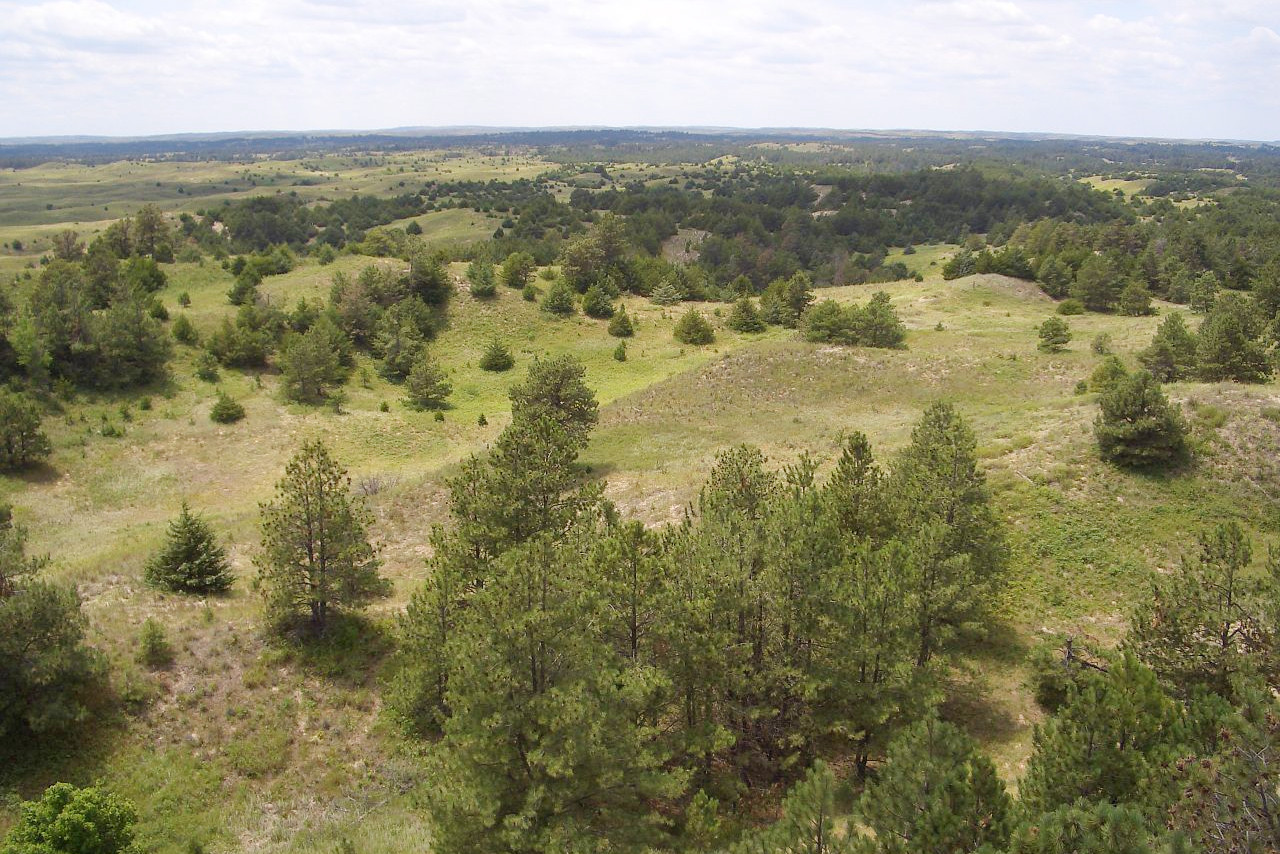
.jpg)

